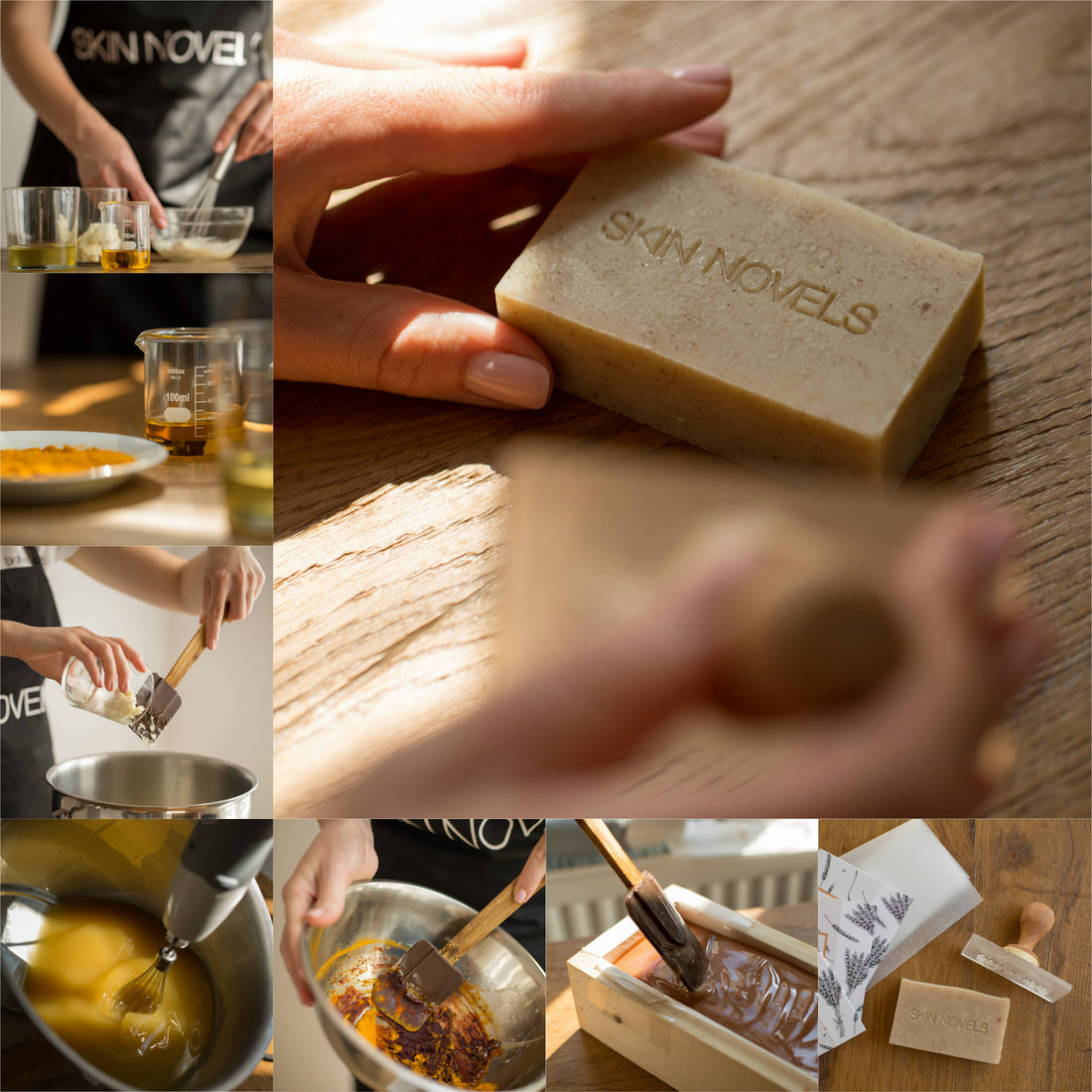Nature is the rear mirror where you can see your soul. Connecting with nature is the only way to find our roots and preserve our identity as humans. Our goal is to bring nature closer by choosing the best ingredients nature can provide for our Skin Novels natural soaps. Aromatherapy, nature, poetry. A kind reminder to love the skin you’re in. The rest is history. In the process.
The history. At the beginning of time, people used only water to clean their body. But soon as they realised that was not enough and satisfying, they looked for improvements. The first production of soap happened around 2800 BC in ancient Babylon. Sumerians combined wood ashes with animal and plant fat and got a substance that was effective for cleaning.
Soap making remained much the same for 3,000 years until 1916. In response to a shortage of fats available, the Germans created a cheap version of synthetic detergent from alkyl sulphonates. Over the next 50 years, the detergent formula continued to be adapted to various cleansing uses, particularly alcohol sulphonates used in shampoos. By the 1950s, synthetic detergents had taken the place of soaps in all situations – from laundry to personal hygiene.
Today, the popular organic movement has begun to swing the pendulum back from synthetic detergents and towards more natural products that follow traditional soap making processes, such as the true cold process soap making we use here at SKIN NOVELS. Why do we use this method? In order to preserve the properties of the natural ingredients intact, which brings amazing benefits for skin’s health.
The process. The soap artisan fills the glass measuring bowl with the appropriate amount of thermal water, based on the recipe. She adds the appropriate amount of lye very slowly to create the lye/water solution and stirs. Then weighs the oils and melt them in the stainless steel pot, using the stove on medium heat.
When the lye/water solution and oils have reached the same temperature, ideally around body temperature, she stirs the water solution slowly into the stainless steel pot of melted oils to create the soap mixture.
The artisan stirs the soap mixture thoroughly for about 15 minutes, until the mixture starts to thicken, like pudding. This is called the “trace” stage. Using an electric stick blender is one way to speed up the stirring and bring the soap mixture to the trace stage more quickly.
Once the soap mixture reaches trace, she adds the essential oils, then the active ingredients and stirs. Again, the trace stage can be recognised by the patterns left in the soap mixture as it is stirred. It will resemble a thickening pudding.
Then she pours the mixture into the molds, making sure that the soap mixture is evenly distributed. She stores the molds in a warm place and allows them to cure and harden for 24-48 hours.
After the soap has hardened, she removes the soap from the mold, cutting into bars and stamping them with our logo. After this process is over, the bars need to cure and dry out for 4-6 weeks before they are ready to be used as soaps.
The poems. If beauty lies in the eyes of the beholder, poetry lies in the heart. With every natural soap we make, we consider both body and soul as equally relevant, wrapping the soaps in the most beautiful poems ever written. Skin Novels are handmade and also heartmade. This is how we do it: packing love and care in every natural soap, for your skin and the soul within. You will find us here. Because we always return to the scene of the rhyme.


